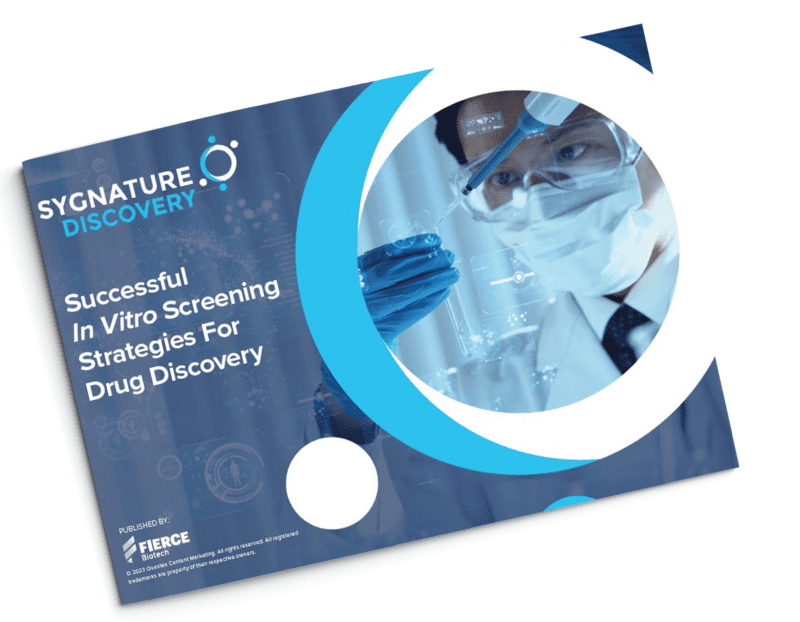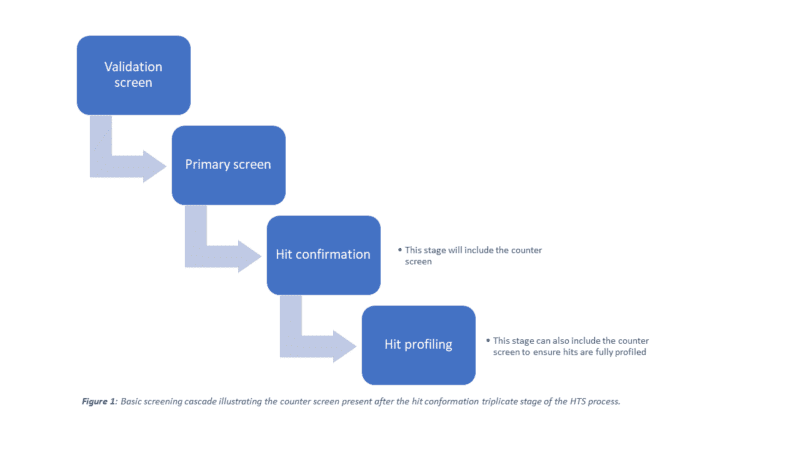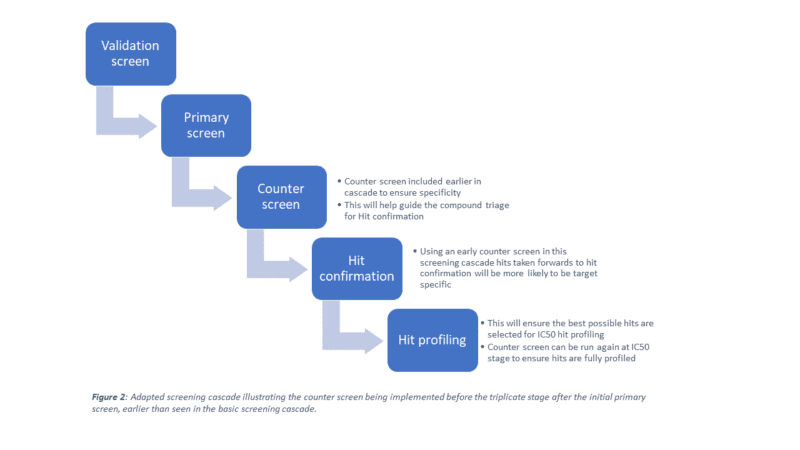The Importance of Counter Screens in HTS
One of the main challenges presented by an HTS output is determining which hits demonstrate true activity towards the target, and which show false positive activity. False positive activity can arise from compound interference in the assay technology, readout or format and it is essential to eliminate these to ensure a high-quality HTS output. Common causes of compound interference can include compound fluorescence, aggregation, luciferase inhibition, redox reactivity, and toxicity. Here we discuss the importance of running a relevant counter screen and why flexibility in its deployment can be key to ensure a high-quality HTS output.
The technology counter screen
A technology counter screen helps to identify and eliminate compounds that interfere with the detection technology used for the HTS. For example, when using a luminescent assay readout, employing a luciferase false positive screen will help to detect and eliminate compounds that directly inhibit luciferase. Similarly, analysing the raw data from an HTRF screen can detect compounds that directly interfere with the HTRF signal.
The specificity counter screen
A specificity counter screen identifies compounds that are active at the target while eliminating those that have undesirable effects and will therefore help to filter out non-specific compounds. False positive ‘hits’ often arise from unwanted compound properties like cytotoxicity in cellular assays. In this case, for a successful HTS, it is essential to design a cytotoxicity assay for detecting and eliminating compounds that modulate the signal through cellular death.
When to run the counter screen?
Another important consideration is when to run the counter screen(s) to ensure the most useful information is generated. Traditionally counter screens are performed alongside the hit confirmation or triplicate screening stage to allow verification that compounds are selective against the desired target, also giving the confirmation rate of compounds.
Running counter screens at the hit potency stage can be valuable when using a specificity counter screen, allowing identification of a selectivity window between the desired target and undesired off-target/cytotoxic effects. For example, if a compound induces cytotoxicity but there is a 10-fold potency window between inhibition and cytotoxicity, then this compound is likely to be of interest as a starting point for a hit validation programme.

Download your free eBook: Successful In Vitro Strategies for Drug Discovery
Learn more about optimal cascade design, hit-to-lead phase insights and lead optimization strategies.
Counter screen flexibility
While running the counter screen at the hit confirmation stage is standard practice, it is also important to be flexible during HTS progression.
In some HTS campaigns, it may be more beneficial to run a counter screen before the hit confirmation stage of the project if, for example, the specificity of hits towards the target cannot be established from the primary hit data.
This early counter-screen data can then assist in the array of selective compounds to advance to hit confirmation. This will ensure that compounds targeting undesired targets are identified and filtered out early, allowing the progression of the most promising molecules into the HTS campaign.
Examples of HTS screening cascades
The flow charts below depict various screening cascades, each showcasing different placements for the counter screen.
Basic screening cascade:

Figure 1: Basic screening cascade illustrating placement of the counter screen during the hit conformation or triplicate stage of the HTS process. This cascade might be most useful during a protein-protein interaction HTS for example, where the counter screen utilised is a technology counter screen.
Adapted screening cascade:

Figure 2 A modified screening cascade, showing implementation of the counter screen before the triplicate stage, following the initial primary screen. This cascade might be utilised during a cell-based HTS where the cell line is prone to cytotoxicity or HTS involving co-activation where the co-factor might account for many of the hits. In these two examples, it might be important to identify true hits earlier, hence the earlier-than-normal use of a specificity counter screen.
Counter screen conclusions
This discussion highlights the importance of not only selecting the right counter screen but also running it at the most suitable stage of the HTS project. It also shows the importance of flexibility to adapt HTS cascades during an HTS campaign to ensure that the right counter screen is used at the right stage.
The goal is to minimise wasted resources and time in working on false positives and to aid the identification of selective, on-target compounds from an HTS.
About the Author
Dr Lorna Charge
Dr Lorna Charge is a Lead Scientist within the Bioscience department with 8 years of experience in Integrated Biology and High Throughput Screening.
Dr Denise Swift
Dr Denise Swift is a senior Principal Scientist and HTS group leader. She has 20+ years of experience in the Biopharma industry, gained predominantly at Sygnature Discovery and AstraZeneca in one of their HTS centres where she was responsible for developing assays and running HTS.
